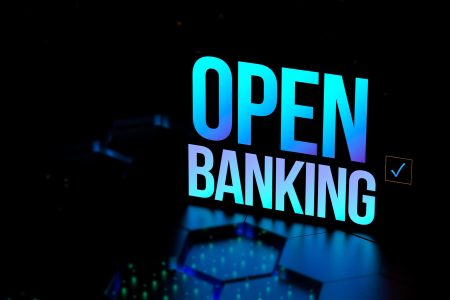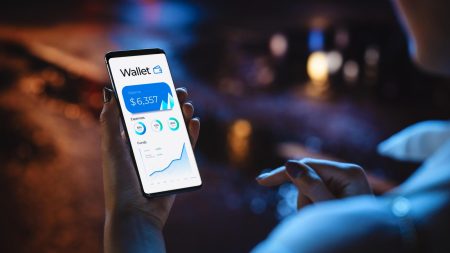Online technical issues ran rampant throughout the world Friday morning when a software update from cybersecurity company CrowdStrike crippled many computers running Microsoft Windows. The global ripple effect was felt across several tech-dependent industries, most notably airlines and banks.
Although there were some disruptions in the U.S. banking space, Bankrate found that many major banks, including Ally, Bank of America, Chase, CIBC U.S., Northwest, Regions Bank and US Bank, didn’t appear to be affected by the CrowdStrike update.
Meanwhile, as many as 60 million Zelle outages were reported after 8 a.m. ET, according to Downdetector. At least three other banks, BOK Financial, First Citizens Bank and TD Bank, notified users that they experienced technical issues.
TD Bank, for example, which has more than 10 million U.S. customers, said its customers were unable to log on to their accounts on Friday, a day that’s typically regarded as payday for many Americans.
“TD and other organizations around the world have been impacted by a global technology disruption,” TD Bank told Bankrate in a statement. “Teams are working hard to restore all online banking and other impacted systems. For immediate banking needs, TD customers can visit their local TD bank or fully-operational ATM. We thank you for your patience.”
Today’s CloudStrike disruption is a sobering reminder of the dependency our banking system has on industry software. When unable to log on to their bank accounts — whether it’s during a minor glitch or a widespread outage — many consumers soon worry about accessing money and paying bills on time.
It seems no bank is immune to these technical problems. Today’s CloudStrike disruption recalls another system outage that impacted customers of numerous large banks, such as Truist, Bank of America, Chase, US Bank and Wells Fargo on Nov. 3, 2023. According to reports that day from Bank of America customers, the bank notified them of an issue with the Automated Clearing House (ACH) transfer system, which caused delays in direct deposits.
The reasons why technical outages occur, of course, vary. A planned maintenance update at a bank could hit a snag, delaying customers’ access to their digital bank accounts. Or, an outage might occur because of a power outage at the bank itself.
The good news is that banks are in the business of guarding your assets, so while you can’t access your accounts, they are at least safe in the vast majority of cases.
“Customers should find solace from the fact that fundamentally, despite these outages, their money is not at risk,” says Nitin Tandon, a principal at Deloitte Consulting.
You’ll probably feel frustrated by the inconvenience. Still, there are steps you can take to reduce your concerns when your bank encounters technical complications. Here’s what to do.
1. Don’t panic when there is an outage
The idea of being unable to see your bank account balance when you live paycheck to paycheck or need to pay a bill pronto is scary.
But if your bank is out of order online, feel secure in knowing the institution will restore the service as soon as it can. Banks have multiple layers of checks and balances in place to make sure that your account is secure and safe — redundant data centers included.
You may want to check the bank’s social media handles for information on what happened and when the institution believes it can restore service to calm your mind.
Also consider reaching out to the bank’s customer service line to get more information on the issue and stay posted on the bank’s resolution plan.
2. Try another banking channel to log in to your account
Beyond waiting it out, you can try another bank channel. If the mobile banking app is out, try logging into online banking on a laptop or on another device. If online banking doesn’t work, try the bank’s branch or its call center.
“It is very rare that there would be an outage at a bank that would cover all four of those different access points,” says Paul Benda, senior vice president, risk and cybersecurity policy, at the American Bankers Association.
Keep in mind, however, that contacting the call center could cause frustrations. If there’s an unplanned problem at the bank, there’s a good chance that the institution is getting bombarded with calls so you might have a long wait time.
Another avenue to consider: Visit an ATM to get your bank balance or to take out cash.
3. Pay bills directly with creditors
If you’re stressed out about paying a bill on time, you have another option: Go to the website of the creditor or service provider, and have the money pulled from your account.
You could also go the more traditional route of writing a check to your biller, or make an in-person cash transfer at a bank branch.
Many servicers now offer the option for consumers to pay bills in real time. So, if there is an outage, you don’t need to worry about scheduling a bill payment days ahead of the due date. Instead, you can pay it immediately after service is restored.
4. Check for fees, fraudulent activity after you’re back online
If you have incurred any fee — including overdraft fees — because of a bank outage, contact your financial institution to request a refund. Some banks will automatically refund certain fees, like Wells Fargo did in a major 2019 outage.
You may also want to keep a close eye on your accounts in the weeks to come after an outage. Fraudsters’ attempts to impersonate you typically spike during an outage, says Shirley Inscoe, a now-retired senior analyst with Aite-Novarica Group, a research and consultancy firm based in Boston.
To combat their efforts, she suggests double checking all transactions in your account after an incident.
“It only takes two or three minutes to just sign in and look over the activity and make sure ‘yes, I did all of those things and all of that looks right,’ and sign back out,” Inscoe says.
5. Ditch the idea of getting a backup option, unless…
If you’ve experienced an online bank outage, you may feel like you want a backup bank account to avoid repeating that scenario. But that approach is an extreme one. While an occasional outage isn’t rare, repeated outages at the same bank would signal a problem. If you feel like a backup bank is necessary, you ought to do something bolder.
“If I’m having too many outages with my bank, I would go find another bank that has less outages,” Deloitte’s Tandon says.
His point underscores what experts encourage: Hold your bank accountable for the service it’s delivering.
“The expectation of many of our clients is — and should be — that [banks are] no different than the power company,” says Ken Meyer, chief information officer at Wells Fargo. “They expect us to work.”
Bottom line
Online banking outages can be frustrating, but by taking the above steps, you can ensure that your finances remain secure. Remember to stay calm, stay updated through social media or by contacting the bank and monitor your account activity after the outage to check for any fees or fraud. If you have any concerns, the bank’s customer service department should be available to offer assistance.
— Former Bankrate writers René Bennett and Mary Wisniewski contributed to previous versions of this article.
Read the full article here
















